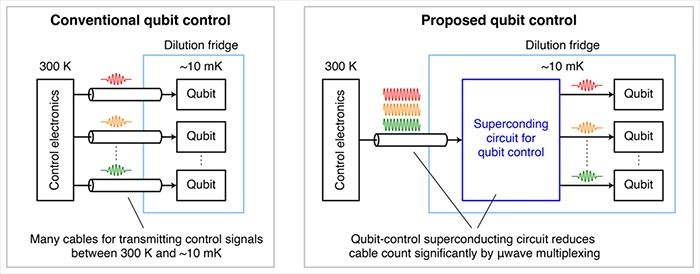Japan’s AIST Successfully Demonstrates Superconducting Circuit for Quantum Computer Systems
The National Institute of Advanced Industrial Science and Technology (AIST) announced the development of large-scale quantum computers to be accelerated by the proposed supercomputing circuit.

In support of the development of large-scale superconducting quantum computers, researchers with the National Institute of Advanced Industrial Science and Technology (AIST), one of the largest public research organizations in Japan, in collaboration with Yokohama National University, Tohoku University, and NEC Corporation, proposed and successfully demonstrated a superconducting circuit that can control many qubits at low temperature.
AI Startup Update: Asian AI Startup Botwa.ai Announces Groundbreaking Conversational AI Solutions
To realize a practical quantum computer, it is necessary to control the state of a huge number of qubits (as many as one million) operating at low temperature. In conventional quantum computers, microwave signals for controlling qubits are generated at room temperature and are individually transmitted to qubits at low temperature via different cables. This results in numerous cables between room and low temperature and limits the number of controllable qubits to approximately 1,000.In this study, a superconducting circuit that can control multiple qubits via a single cable using microwave multiplexing was successfully demonstrated in proof-of-concept experiments at 4.2 K in liquid helium. This circuit has the potential of increasing the density of microwave signals per cable by approximately 1,000 times, thereby increasing the number of controllable qubits significantly and contributing to the development of large-scale quantum computers. The above results will be published in “npj Quantum Information” on June 3 at 10 a.m. London time.
NEC Corporation has established itself as a leader in the integration of IT and network technologies while promoting the brand statement of “Orchestrating a brighter world.” NEC enables businesses and communities to adapt to rapid changes taking place in both society and the market as it provides for the social values of safety, security, fairness and efficiency to promote a more sustainable world where everyone has the chance to reach their full potential.
Article Information
Journal: npj Quantum Information
Title: Microwave-multiplexed qubit controller using adiabatic superconductor logic
Authors: Naoki Takeuchi, Taiki Yamae, Taro Yamashita, Tsuyoshi Yamamoto, and Nobuyuki Yoshikawa
DOI: 10.1038/s41534-024-00849-2
Read More: How Generative AI Is Changing Customer Service

Comments are closed.